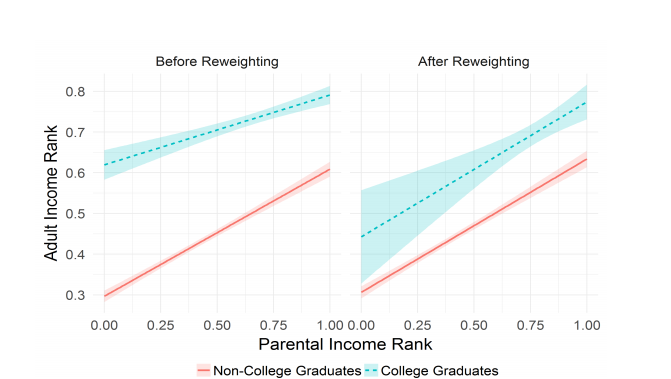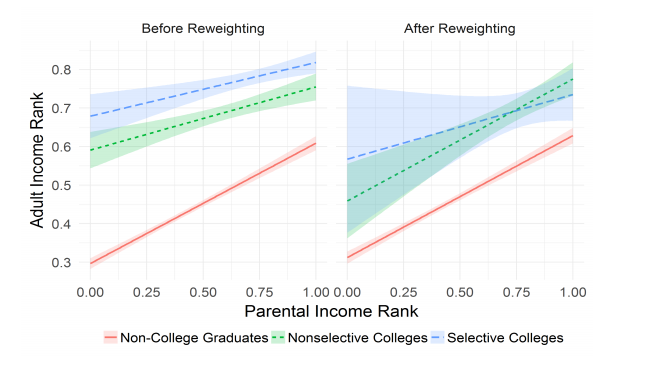Here’s a short case for a Green New Deal:
- We face a climate emergency.
- Government spending must be part of the solution. Even if we passed a robust carbon tax, we still need coordinated action that can’t be accomplished by individuals and firms that are trying to minimize their taxes. For example, building a new power grid, shifting some traffic from a national network of highways and gas stations to a more sustainable transportation system, and subsidizing basic research are goals that need coordinated solutions. Note that most actual work will still be done by companies (that’s true in Europe as well as the USA); the question is who should plan and pay for it. I suspect the payer must be the government, borrowing at currently low rates and using tax revenues to finance the debt.
- If we are going to spend trillions, we must spend it equitably. That means not just distributing the resources fairly but using them to combat accumulated injustices. Jobs and profits must go to the people who deserve and need them most. Deciding who those people are requires a theory of justice; and in my view, such a theory requires attention to racial injustice as well as class differences.
- Politically, the way to pass a major economic reform is to ensure it serves many interests. Although it may offend purist notions of good government and detract from the cost-effectiveness of our response to climate change, we’re probably going to have to make a big spending package a bit of a “Christmas tree,” with some additions that address legitimate concerns apart from the climate and some that just help get the bill through Congress.
Meanwhile, we also face a sustained decline in certain aspects of our civil society, with fewer Americans associating, organizing, and exercising power. This is one reason that our political system fails to address issues like climate change and racial injustice.
The original New Deal supported civic life in at least three ways.
First, the Civilian Conservation Corps added an explicit civic education curriculum to its public works projects, striving to teach the participants to be responsible and effective citizens.
Second, programs like the WPA not only employed Americans to do important work but also empowered them to make creative decisions about what work to do. The WPA’s artists, architects, engineers, craftspeople, and laborers contributed their talents and ideas, thus gaining a sense that they (not the government) were rebuilding America.
Third, Roosevelt explicitly supported unions, which not only increased workers’ take-home pay but also recruited them into powerful, autonomous, durable groups.
Could we do this again? One component would be big employment programs that provide civic and workforce education for the people who insulate houses or build public transit. That was already the proposal of Van Jones’ 2008 book The Green Collar Economy: How One Solution Can Fix Our Two Biggest Problems. His chapter four is entitled “The Green New Deal.” It almost goes without saying that most federally supported jobs should be unionized jobs.
Another component would be support for civil society groups. Rural electric cooperatives own 42 percent of the distribution lines in the US and serve 12 percent of the population. They have already shifted somewhat more to renewables than the energy industry as a whole (even though they are disproportionately based in conservative states). At the same time, they provide opportunities for Americans to participate in governing significant assets–for instance, at their required annual public meetings. They should be favored along with urban analogues.
A third component would be lots of support for innovative solutions by smallish groups– for-profit startups as well as nonprofits. If you invent a company that has a positive impact on the climate, you are doing public work.
Fourth, people should have more and better ways to influence and even create policy, at all scales. The traditional means include formats like public meetings, which devolve into lines of angry citizens who each get 30 seconds to yell at the decision-makers. Check out Tina Nabatchi and Matt Leighninger’s book Public Participation for 21st Century Democracy (2015) for better ideas.
Finally, as I mentioned earlier, to address social justice, we need an account of what justice requires. That is a contested matter, appropriately so. It involves conflicting goods, from the intrinsic value of nature to the principle of liberty to concerns about past injustices. We won’t reach consensus, because these issues are complex and we differ in our values, identities, beliefs, and interests. But we can have a better or worse conversation about justice at all scales, from neighborhoods to the US Congress. Better conversations require better institutions, from neighborhood centers and listserves to broadcast news.
It would be important not to detract from the ranked priorities of (1) combating climate change and (2) remedying injustice, but a thoughtful approach could use civic means to accomplish these goals. In fact, civic engagement can strengthen the environmental benefits. For example, although it takes time to involve the public in designing a new transportation system, the chances are then greater that people will use the system. And unless they use it, it does no good for the climate.
I would not go so far as to argue that civic engagement always makes programs work better. Engagement can be done well or badly. There can also be tradeoffs between good engagement processes and efficiency. The most difficult challenge for environmentalists may be that active citizens resist directing resources efficiently to climate issues, because their agendas are broader. But I do think it’s worth investing in civic engagement to maximize the advantages for (1) climate, (2) justice, and (3) civic life.
See also national service in the stimulus; empowering citizens to make sure the stimulus is well spent; public engagement in the stimulus: Virginia’s example; an overlooked win for civic renewal: federally qualified health centers; work, not service. And see Harry C Boyte, “Populism or socialism? The divided heart of the Green New Deal.”



